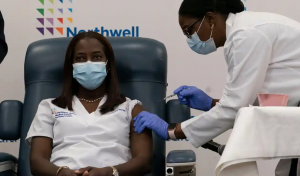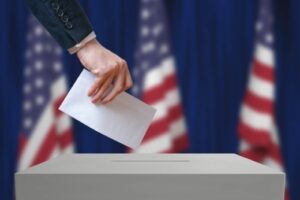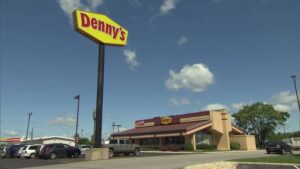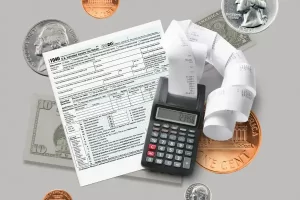More than 300,000 people have now died because of Covid-19 in the United States, with the latest milestone coming amid record daily fatalities and the national rollout of the Pfizer/BioNTech vaccine.
The first shot in the US mass vaccination program was given shortly after 9 am ET on Monday morning at the Long Island Jewish Medical Center in Queens, New York. Intensive care nurse Sandra Lindsay became the first person not enrolled in the vaccine trials to receive it.
“It feels surreal,” she said. “It is a huge sense of relief for me, and hope.”
New York Governor Andrew Cuomo described the vaccine as “the weapon that will end the war”. Donald Trump tweeted: “First Vaccine Administered. Congratulations USA! Congratulations WORLD!”
As hospitals around the US continue to describe a crisis of capacity in intensive care units, experts have described this winter as likely the most perilous time, despite the hopes brought by the recent vaccine progress. It also comes less than a month after the country lost a quarter of a million people to the disease.
The latest figures from Johns Hopkins University’s coronavirus resource center show more than 300,456 fatalities in the US and more than 16m cases. It took just 27 days to go from 250,000 deaths to 300,000 – the fastest 50,000-death jump since the pandemic began. Some models project that hundreds of thousands more people could die before vaccines become widely available in the spring and summer.
The US has the highest death toll from the disease in the world, followed by Brazil, India, and Mexico, and the US is among the worst-hit of developed nations in terms of its death rate. Globally, there have been more than 69m cases and at least 1.5m deaths.
Earlier this month the UK became the first country in the world to begin administering Pfizer’s Covid-19 vaccine, followed quickly by Canada and the US.
The US government is aiming to distribute the first wave of 2.9 million vaccine doses to 636 locations nationwide by the end of the week. US Army General Gustave Perna said on a Monday press call that severe storms expected in some parts of the country this week could pose challenges to vaccine shipments.
On Sunday, trucks hauling trailers loaded with suitcase-sized containers of Covid-19 vaccine rolled out of Pfizer’s manufacturing facility in Kalamazoo, Michigan, launching the largest and most complex vaccine distribution project in the US.
While progress on the vaccine is being celebrated across America, it also comes amid safety concerns and fears of anti-vaccination sentiments that might hinder the rollout.
Lindsay, 52, who is black, told the New York Times she hoped that by being the first person outside of medical trials to get vaccinated, she would help “inspire people who look like me, who are skeptical in general about taking vaccines”.
There are also worries over a potentially chaotic roll-out with local plans for vaccine distribution that vary widely, lack federal funding, and will not reach everyone even in early, limited populations.
The US, which has recently been reporting around 2,200 deaths per day, recorded more than 3,000 deaths on one day for the first time on 9 December.
Cases have been surging in the US since mid-October to more than 200,000 a day and experts including Dr. Anthony Fauci have said the worst of the surge is expected after Thanksgiving – despite official requests not to travel – and likely just before Christmas.
Fauci, the top US infectious disease expert, told CNN his fears about Christmas were the same as Thanksgiving: people traveling and not social distancing, “only this may be even more compounded because it’s a long holiday”.
Dr. Michael Osterholm, a member of US president-elect Joe Biden’s Covid-19 advisory board, told: “No Christmas parties. There is not a safe Christmas party in this country right now.
“It won’t end after that but that is the period right now where we could have a surge upon a surge upon a surge.”
Hospitals around the country have reported being under huge pressure. One in 10 Americans – especially across the midwest, south, and south-west – live in an area where intensive care beds are either full or available at lower than 5% of capacity, the New York Times reported.
In California, Fresno county’s interim public health officer, Dr. Rais Vohra, told that there was recently one day in the county with zero intensive-care capacity: “I know that those who aren’t in the medical field may not understand or quite grasp just how dire the situation is, but all the things you’re hearing about – how impacted our hospitals are, about how dire the situation with our ICUs is – it’s absolutely true. And that really is the reason that we want everyone to stay home as much as possible.”













